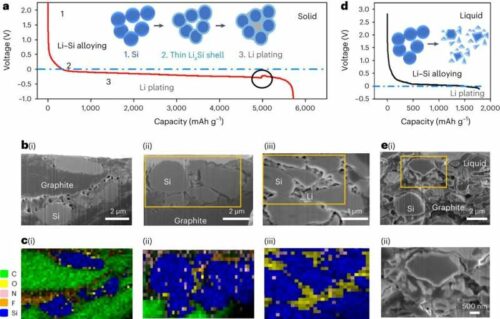This paves the way for developing more efficient and practical solid-state batteries, with profound implications for the future of electric vehicles and energy storage solutions.

Researchers at the Harvard John A. Paulson School of Engineering and Applied Sciences (SEAS) have achieved a significant breakthrough in battery technology, unveiling a lithium metal battery capable of enduring over 6,000 charge and discharge cycles, surpassing the performance of all existing pouch battery cells. The innovation also allows for lightning-fast recharging times, promising a potential revolution in energy storage.
Lithium metal anode batteries, often referred to as the “holy grail” of battery technology, have the potential to offer ten times the capacity of conventional graphite anodes, significantly extending the range of electric vehicles. Dr. Xin Li, Associate Professor of Materials Science at SEAS and the senior author of the research paper, stated, “Our research is an important step toward more practical solid-state batteries for industrial and commercial applications.” One of the main challenges in developing these batteries has been the formation of dendrites on the anode’s surface, which can lead to short circuits or even fires. Dendrites occur during charging when lithium ions migrate from the cathode to the anode, attaching to the anode’s surface in a process known as plating. The uneven plating caused by this process can create issues during discharging and recharging.
In their previous work, the team introduced a multi-layer battery design that prevented dendrite penetration by controlling and containing them. Their latest research used micron-sized silicon particles in the anode to restrict the lithiation reaction, enabling the homogeneous plating of a thick layer of lithium metal. This approach wraps lithium metal around the silicon particles, preventing dendrite growth. In their design, lithium metal gets wrapped around the silicon particle, like a hard chocolate shell around a hazelnut core in a chocolate truffle. This design ensures even current distribution, enabling rapid plating and stripping, allowing the battery to recharge in approximately 10 minutes.
The team tested a postage stamp-sized pouch cell version of the battery, outperforming other pouch cell batteries by retaining 80% of its capacity after an astonishing 6,000 charge cycles. The technology has been licensed to Adden Energy, a Harvard spinoff company that Li and three Harvard alumni co-founded. Adden Energy has successfully scaled the technology to create smartphone-sized pouch cell batteries. The research provided insights into materials that could yield similar performance, identifying dozens of potential candidates.






